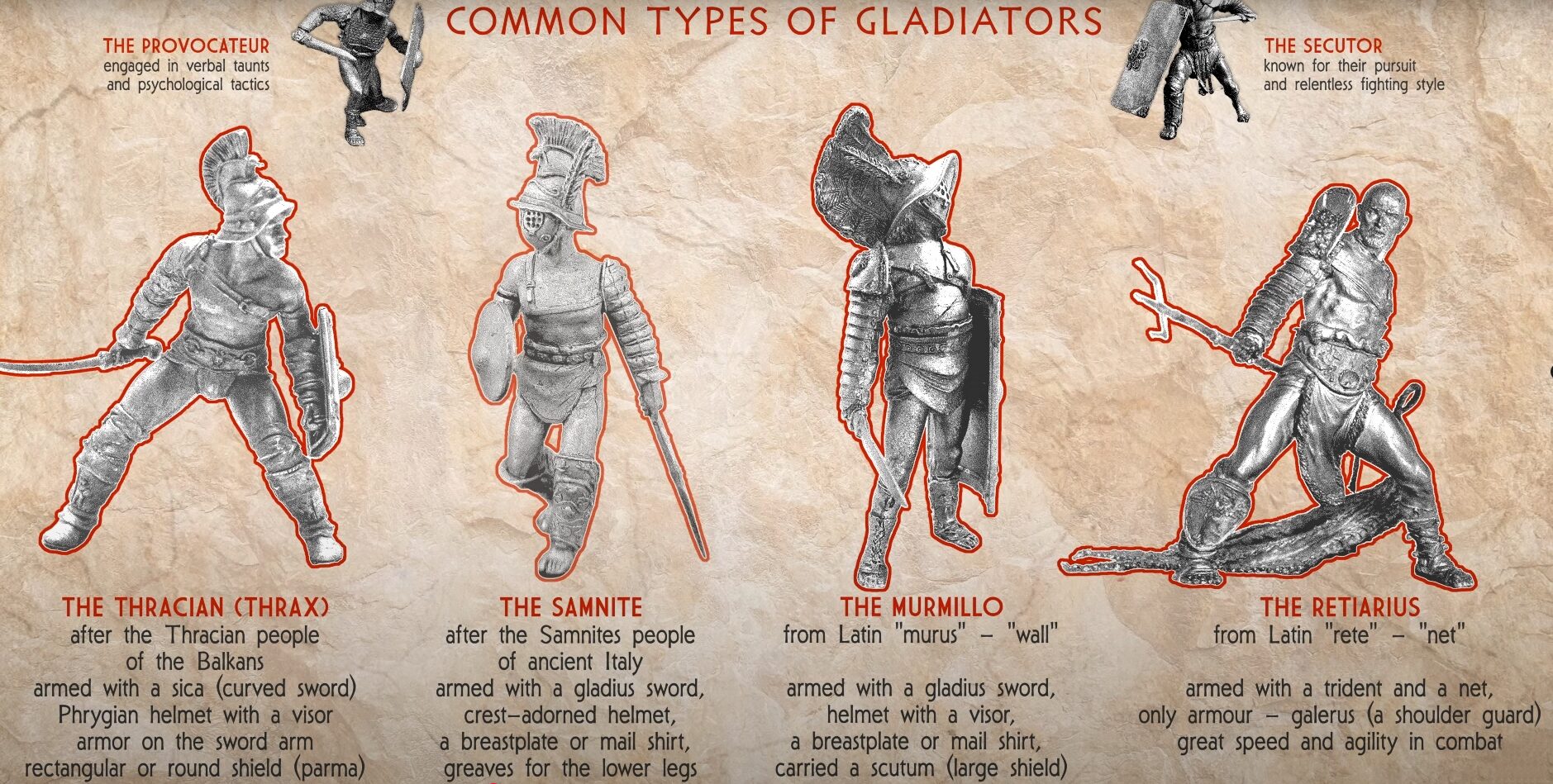Female gladiators in ancient Rome challenged the expectations of their society. Though often dismissed as myth, written accounts, carvings, and burial evidence show that some women did take part in arena combat. These women fought in different styles, using the same weapons and armor as their male counterparts. Their presence in the games reveals how entertainment, class, and gender roles intersected in Roman culture.
Public reaction to female gladiators was mixed. Many Roman writers criticized them as improper, while others recorded their performances as fact. Laws were later passed to restrict women from fighting, showing both their involvement and the discomfort it caused among Roman leaders. Despite the criticism, these women pursued independence and fame in a world that offered them few choices.
Key Takeaways
- Women participated in Roman arena combat despite social opposition.
- Written and physical evidence confirm their presence and skill.
- Their actions reflected both defiance and a desire for personal freedom.
Origins of Gladiatorial Games
Funeral Customs and Early Combat Displays
The earliest gladiatorial contests began in 264 BCE as part of funeral ceremonies for wealthy Romans. After the burial, participants fought in staged battles meant to honor the deceased. These early fights often reenacted scenes from Roman history, myth, or the life of the person being remembered.
Key Features of Early Games:
- Held during funerals for elite citizens
- Featured symbolic or historical reenactments
- Served as tributes to military or personal achievements
These events reflected Roman beliefs about duty, bravery, and respect for the dead. They were not yet public spectacles but private acts of remembrance.
Shift Toward Public Spectacle
Over time, these contests gained popularity beyond funerals. Wealthy sponsors began organizing them for public celebrations such as imperial birthdays, religious festivals, and military victories. The games moved from private courtyards to large arenas, turning personal rituals into mass entertainment.
| Event Type | Purpose | Setting |
|---|---|---|
| Funeral rites | Honor the deceased | Private ceremonies |
| Public festivals | Celebrate emperors or gods | Amphitheaters and forums |
As the games became public, they lost their original link to mourning and evolved into a major form of Roman entertainment.
Types of Gladiators
Murmillo
The Murmillo fought with a large rectangular shield and a short sword. Their helmet stood out with a fish-shaped crest, which gave them a distinct look in the arena. They often faced the Retiarius, creating a match between heavy armor and agility.
| Equipment | Description |
|---|---|
| Helmet | Fish crest on top |
| Shield | Large and rectangular |
| Weapon | Short sword |
Retiarius
The Retiarius relied on speed and skill instead of heavy armor. They carried a net, a trident, and sometimes a dagger. Their usual opponent was the Murmillo, making their fights a display of contrast between defense and mobility.
Key Traits:
- Light armor for quick movement
- Used a net to trap the enemy
- Fought with a trident or dagger
Samnite
The Samnite wore a visored helmet and carried an oblong shield. They fought with a short sword, similar to the Murmillo, but their style came from early Roman traditions. Their armor and tactics reflected the military look of the Samnite warriors of Italy.
| Gear | Details |
|---|---|
| Helmet | Visored for protection |
| Shield | Oblong and sturdy |
| Weapon | Short sword |
Thracian
The Thracian, also called Thrax, fought with a curved sword and a small round shield. Their fighting style focused on quick strikes and agility. They wore armor that allowed movement while offering protection in close combat.
Main Features:
- Curved blade for slashing attacks
- Round shield for defense
- Flexible armor for fast movement
Evidence for Female Gladiators
Archaeological Findings
Archaeologists uncovered the burial of the Great Dover Street woman in 1996. Items found with her suggest she was honored as a gladiator. Scholars often call her the Gladiator Girl because her grave goods match those linked to arena fighters.
A second-century CE relief from Bodrum, Turkey also supports the idea of female combatants. It shows two women, identified by stage names Amazon and Achillia, engaged in battle. Many believe they reenacted the story of Achilles and the Amazon queen Penthesilea.
| Artifact | Location | Date | Significance |
|---|---|---|---|
| Grave of the Great Dover Street Woman | London, England | c. 1st–2nd century CE | Suggests a woman honored as a gladiator |
| Relief of Amazon and Achillia | Bodrum, Turkey | 2nd century CE | Depicts women fighting in the arena |
Artistic and Written Inscriptions
Inscriptions and carvings from the Roman world mention women who fought in the arena. Some records use terms like ludia (female performer) or mulieres (women), showing that female fighters were recognized but not described as noble ladies.
A record from Ostia, near Rome, states that women—but not high-born ladies—could appear in the games. This implies that upper-class women had previously done so. Legal decrees also confirm official concern about their presence, including a law in 11 CE restricting free-born women under 20 from performing and a ban in 200 CE by Emperor Septimius Severus on all female participation.
Historical Writings
Roman writers such as Juvenal, Tacitus, Suetonius, and Cassius Dio criticized women who fought in the arena. They described them as disgracing their families and social class. Juvenal mocked a husband whose wife trained as a gladiator, listing her armor and gear as proof of her unseemly behavior.
Despite the criticism, these accounts confirm that women fought publicly. The writers’ disapproval highlights how unusual and controversial female gladiators were in Roman society, not that they were fictional.
Societal Attitudes Toward Female Gladiators
Criticism from Roman Writers
Many Roman historians viewed women who fought in the arena as shameful. Writers such as Juvenal, Tacitus, Suetonius, and Cassius Dio described them as acting against proper female behavior. They mocked both the women and their husbands, using their stories to show moral decline in society.
| Writer | Viewpoint | Example of Criticism |
|---|---|---|
| Juvenal | Saw female fighters as a disgrace | Mocked husbands of women who trained as gladiators |
| Tacitus | Claimed women dishonored themselves | Noted their public fighting as improper |
| Cassius Dio | Condemned female participation | Linked it to loss of respect for women |
Laws and Imperial Bans
Roman leaders passed several laws to stop women from fighting in the arena. In 11 CE, the Senate forbade free-born women under 20 from performing in public games. Later, Emperor Septimius Severus banned all women from the arena in 200 CE, saying it weakened respect for their gender.
Examples of Legal Actions:
- 11 CE: Law restricted young free-born women.
- 200 CE: Complete ban on female participation.
- 3rd Century CE: Inscriptions still noted that “women but not ladies” could fight, showing earlier involvement of upper-class participants.
Social Rank and Involvement
Female gladiators came from varied backgrounds. Some were likely slaves or performers, while others may have been free-born or of higher status. Evidence suggests that women from wealthy families also entered the arena before the bans.
Becoming a gladiator gave women rare independence. They could earn money, gain fame, and live without male control. For women in a society that limited their choices, the arena offered a way to act outside traditional roles.
Motivations and Lives of Female Gladiators
Defying Social Expectations
Women who entered the arena challenged the strict gender roles of Roman society. They stepped outside the expectations that confined most women to domestic life. Roman writers often criticized them for acting like men, yet these women showed that courage and skill were not limited by gender.
| Roman View | Female Gladiator View |
|---|---|
| Considered disgraceful | Seen as a path to self-expression |
| Violated social norms | Demonstrated strength and choice |
Seeking Personal Freedom
In a culture where men controlled most aspects of life, fighting in the arena gave women a rare sense of independence. Becoming a gladiator allowed them to make their own choices and earn their own money. Some came from families connected to training schools, giving them access to this world.
Key forms of independence:
- Control over earnings
- Freedom from male authority
- Ability to choose their lifestyle
Pursuing Recognition and Status
Successful gladiators could gain fame and social mobility. Popular fighters were treated like celebrities and could attract public admiration. Though the life was dangerous, it offered rewards that few other paths could provide to women in ancient Rome.
Examples of benefits:
- Public recognition and applause
- Potential financial gain
- A new social identity beyond traditional roles
Legacy and Historical Impact
Female gladiators left a distinct mark on Roman culture and its view of gender roles. Their presence in the arena challenged expectations of women’s behavior and status in a society that valued strict social order. Despite criticism from writers like Juvenal and Cassius Dio, their participation showed that women could claim public recognition through skill and courage.
Archaeological and artistic evidence supports their existence and influence:
| Evidence Type | Example | Significance |
|---|---|---|
| Burial site | Great Dover Street Woman | Suggests she was honored as a gladiator |
| Relief carving | Amazon and Achillia from Bodrum | Depicts women reenacting mythic combat |
| Inscriptions | Found in Ostia | Records women’s participation in arena games |
Roman laws later restricted women from performing in the arena, showing how their visibility unsettled traditional norms. Yet, their brief inclusion in gladiatorial life revealed the appeal of independence and fame that transcended class and gender. Their story continues to shape modern understanding of women’s roles in ancient Rome.



